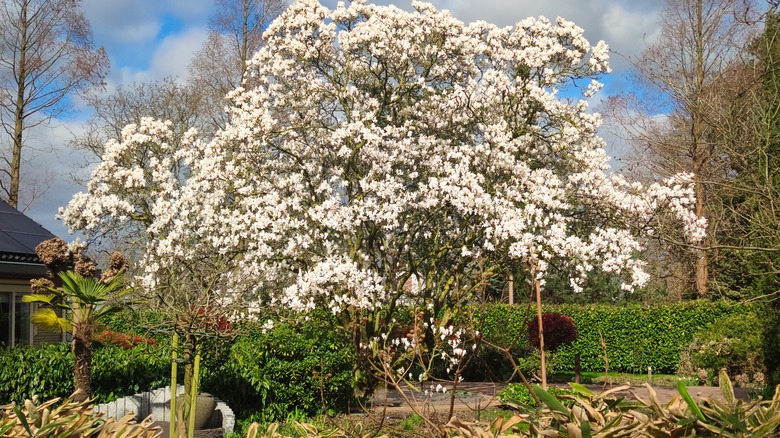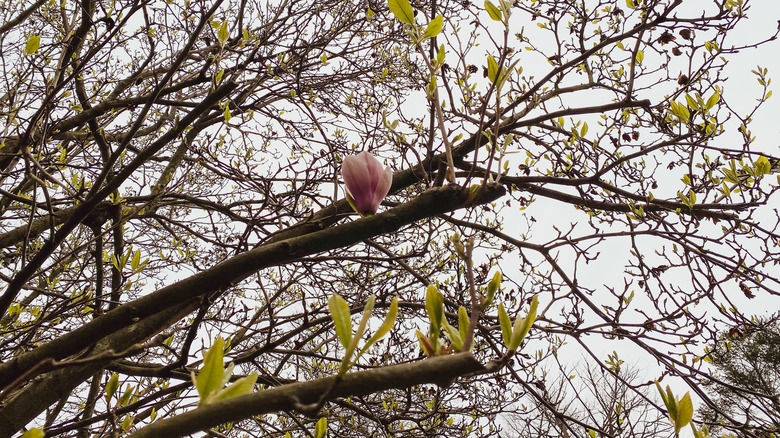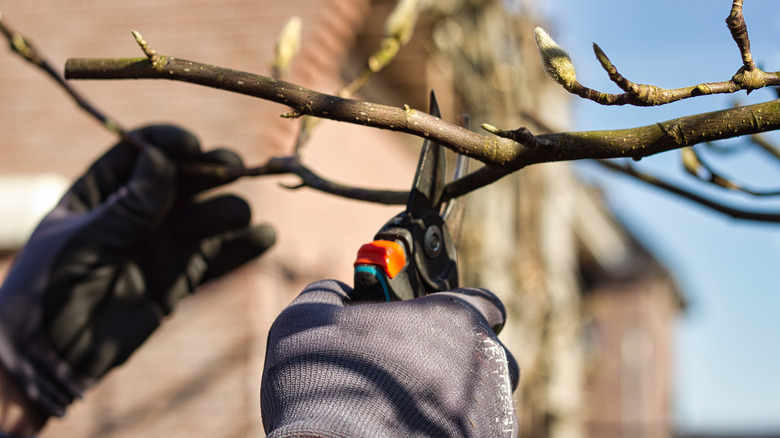The Best Time Of Year To Tame An Overgrown Magnolia Tree
We may receive a commission on purchases made from links.
Magnolia trees (Magnolia spp.), featuring long, pointed leaves and big, beautiful blooms, are thought to have evolved over 95 million years ago as the first flowering plant species on Earth, according to the Smithsonian Gardens. This theory is entertained by the similarities between modern magnolia trees and fossils of the earliest flowering plants. Today, they're commonly used as centerpieces for gardens, where they benefit from occasional, strictly necessary pruning. It's best to prune them when blooming has finished, from mid-summer to early fall for deciduous species or before flower buds appear in spring for the evergreen Magnolias.
With a history that traces back so far, it's no wonder these trees survive in a variety of climates. There's not much to growing and caring for magnolia trees, making them a great choice for new growers. They can be very self-sufficient, needing only basic routine care, and don't require a lot of water after their first couple of years. They're essentially the perfect low-maintenance flowering tree; just keep an eye on them toward the end of each year to manage unruly or damaged branches.
Why should you prune your magnolia tree?
Strategically trimming the branches of a magnolia tree can be beneficial for their health and keep them from becoming overgrown and unsightly. These trees don't explicitly require pruning to survive, but doing so can help them live longer and healthier lives. Pruning for shaping is best done when the tree is young, as younger trees aren't nearly as sensitive as mature ones. Some varieties are also prone to bleeding when cut, which is why it's important to prune your magnolia tree during the correct time of year.
The main reason you might need to prune your tree is size. Magnolia trees planted near walls or fences could grow large enough to cause damage to standing structures. Similarly, you may want to prune magnolia trees that are blocking out the sun in areas you'd prefer to have natural light in, such as flower beds and nearby vegetable gardens. Keep in mind that too much pruning can be detrimental, though, and is a common mistake when pruning the trees in your yard.
Additionally, removing dead limbs helps to prevent fungi and disease, which can hinder growth and cause other parts of the tree to become infected. Neglecting infected branches can also spread illness to other nearby trees. Keep your trees in good health, and your magnolia flower buds will bloom year after year.
How to prune your magnolia tree
You won't need any special tools for magnolia tree pruning. Depending on the height of your tree, you might need a pole pruner, but for most trees, you can get by using your regular pruning shears. Haus & Garten's 8.5-inch Professional Premium Titanium Bypass Pruning Shears, for about $30 on Amazon, will do the trick if you don't have a pair on hand. If your shears are dull, they can damage the branches and invite disease. So, be sure to use the best method for sharpening your garden shears to help the wounds heal faster.
Before pruning, determine how much of the branch you'd like to cut back. To shape your magnolia tree, start with branches that are significantly longer than the shape you want and are at least 1½ inches in diameter. These branches can either be cut back to the halfway point or removed entirely, depending on your preference. You can also trim back smaller branches to your liking.
For general upkeep and to maintain healthy bloom production, prune back water shoots, which grow vertically and take off very quickly. These branches can slow down growth and inhibit flower production. The same rule should be applied for suckers, which are vertical shoots that grow from the base or trunk of the tree and cause similar issues.


